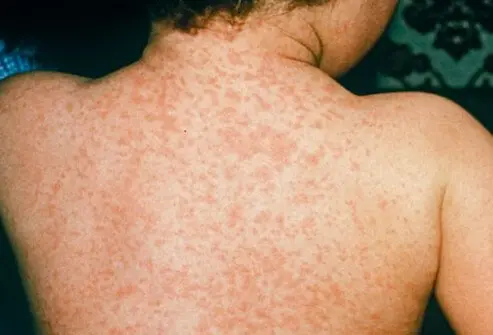Measles is a highly contagious viral infection that primarily affects the respiratory system and spreads through coughing, sneezing, or close contact with an infected person. It is caused by the measles virus and remains a concern worldwide, especially among unvaccinated individuals. Although measles often resolves on its own, it can lead to serious complications, particularly in children, pregnant women, and those with weakened immune systems. Knowing what to do if you or your child develops measles is crucial for recovery and preventing its spread.
Recognizing the Symptoms
Before managing measles, it is important to confirm its signs. Symptoms usually appear 10–14 days after exposure and may include:
- High fever (often above 101°F or 38.3°C)
- Cough, runny nose, and red, watery eyes (classic signs of measles)
- Tiny white spots inside the mouth (Koplik’s spots)
- Red rash that usually starts on the face and spreads downwards to the rest of the body
If these symptoms appear, especially after contact with someone diagnosed with measles, consult a healthcare provider promptly.
Step 1: Confirm the Diagnosis
If you suspect measles, seek medical advice immediately. A doctor can confirm the diagnosis through symptoms and sometimes a blood test. Do not visit a clinic or hospital without informing them first, as measles is highly contagious, and precautions need to be taken to prevent exposing others.
Step 2: Isolate to Prevent Spread
Measles spreads through the air and can linger for up to two hours after an infected person has coughed or sneezed. To prevent transmission:
- Keep the infected person at home and away from school, daycare, or work.
- Avoid visitors until at least 4 days after the rash appears.
- Use separate towels, bedding, and utensils for the patient.
- Ensure good ventilation in the patient’s room.
Step 3: Focus on Rest and Hydration
There is no specific antiviral treatment for measles, so care is supportive. Encourage:
- Plenty of rest to help the immune system fight the virus.
- Hydration: Offer water, clear soups, and natural fruit juices to prevent dehydration caused by fever.
- Soft, easy-to-digest foods to maintain energy levels.
Step 4: Manage Fever and Discomfort
Fever is one of the most uncomfortable symptoms of measles. To manage it:
- Give acetaminophen (paracetamol) or ibuprofen (age-appropriate doses) to reduce fever and ease body aches.
- Avoid aspirin in children due to the risk of Reye’s syndrome.
- Use a cool compress on the forehead to provide relief.
- Keep the room temperature comfortable and dress the patient in light clothing.
Step 5: Relieve Eye and Throat Irritation
Measles often causes red, sore eyes and a dry throat. To ease these:
- Dim the lights or use sunglasses for eye sensitivity.
- Use saline eye drops to relieve dryness.
- Offer warm fluids like herbal tea or clear broth for throat comfort.
- A humidifier in the room can reduce dryness in the air.
Step 6: Monitor for Complications
Most people recover without major issues, but measles can lead to complications such as ear infections, pneumonia, diarrhea, or encephalitis (brain inflammation). Seek immediate medical attention if you notice:
- Difficulty breathing or rapid breathing
- Severe cough or chest pain
- Seizures or confusion
- Persistent vomiting or dehydration
- Rash that worsens or doesn’t improve after several days
Step 7: Boost Vitamin A Intake
According to the World Health Organization, Vitamin A supplements can reduce measles complications, especially in children. Ask your doctor if supplementation is necessary.
Step 8: Prevent Future Infections
If you or your child hasn’t been vaccinated, this outbreak is a wake-up call. The MMR vaccine (measles, mumps, rubella) is highly effective and safe. Two doses provide lifelong immunity. Ensure:
- All household members are vaccinated (if eligible).
- Inform those who have been in close contact so they can take precautions.
When to Seek Emergency Help
Call your doctor or emergency services if the infected person:
- Has trouble breathing
- Shows signs of dehydration (dry mouth, no tears, reduced urination)
- Becomes extremely lethargic or unresponsive
- Has seizures
Final Thoughts
Measles is preventable but still a risk when vaccination rates drop. If you or your child gets measles, early isolation, supportive care, and monitoring for complications are essential. Remember, the best protection is prevention through vaccination.
Do Follow Us On Instagram







